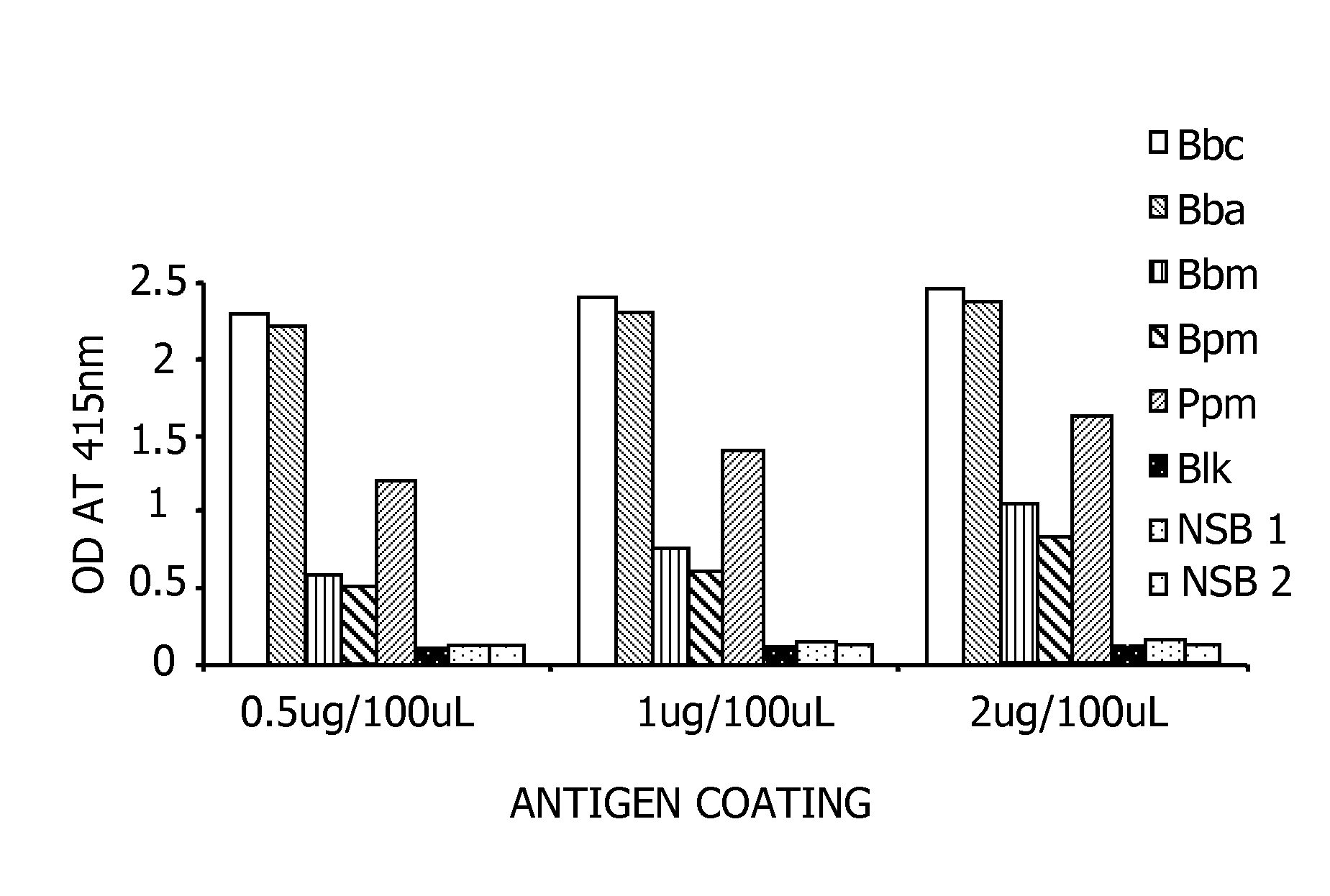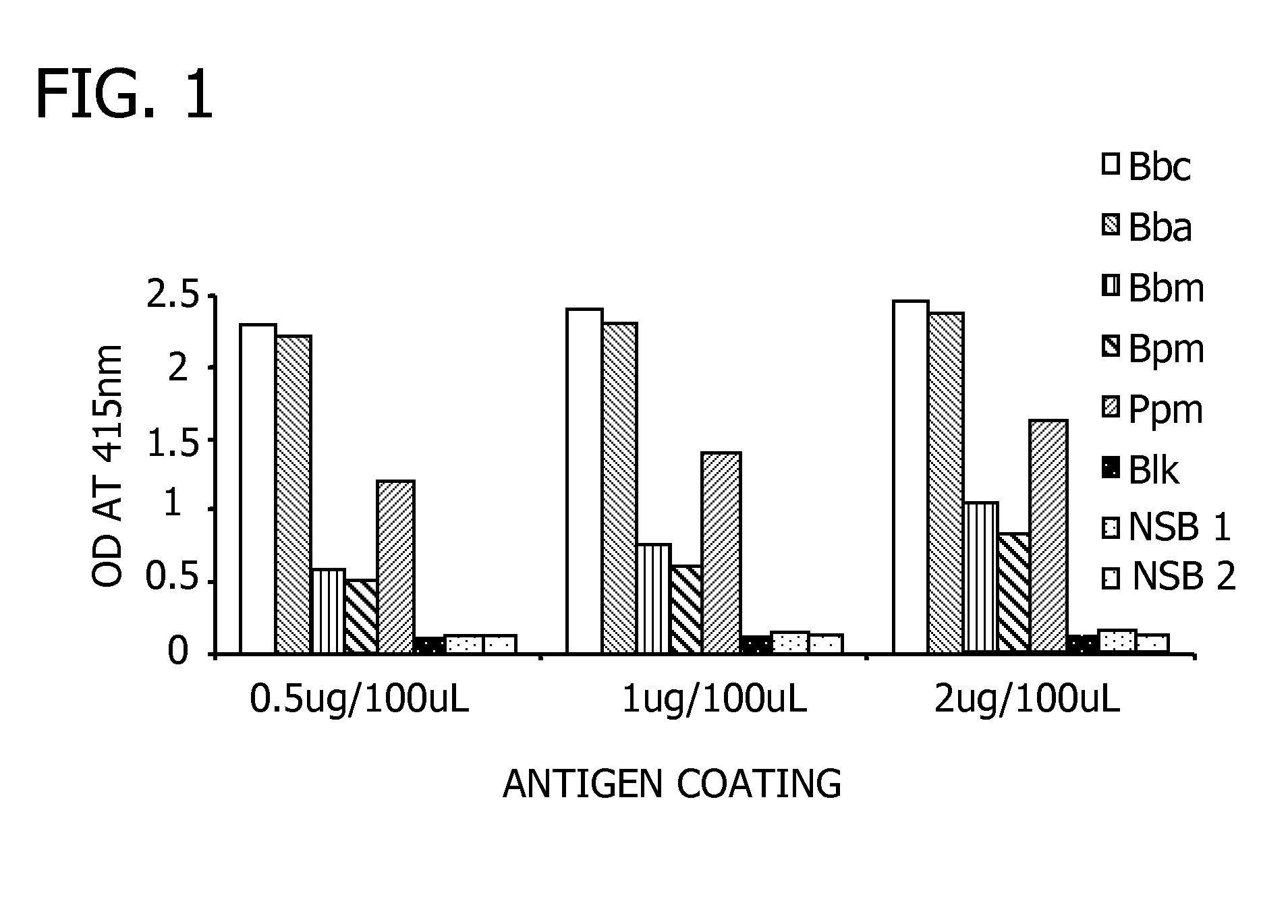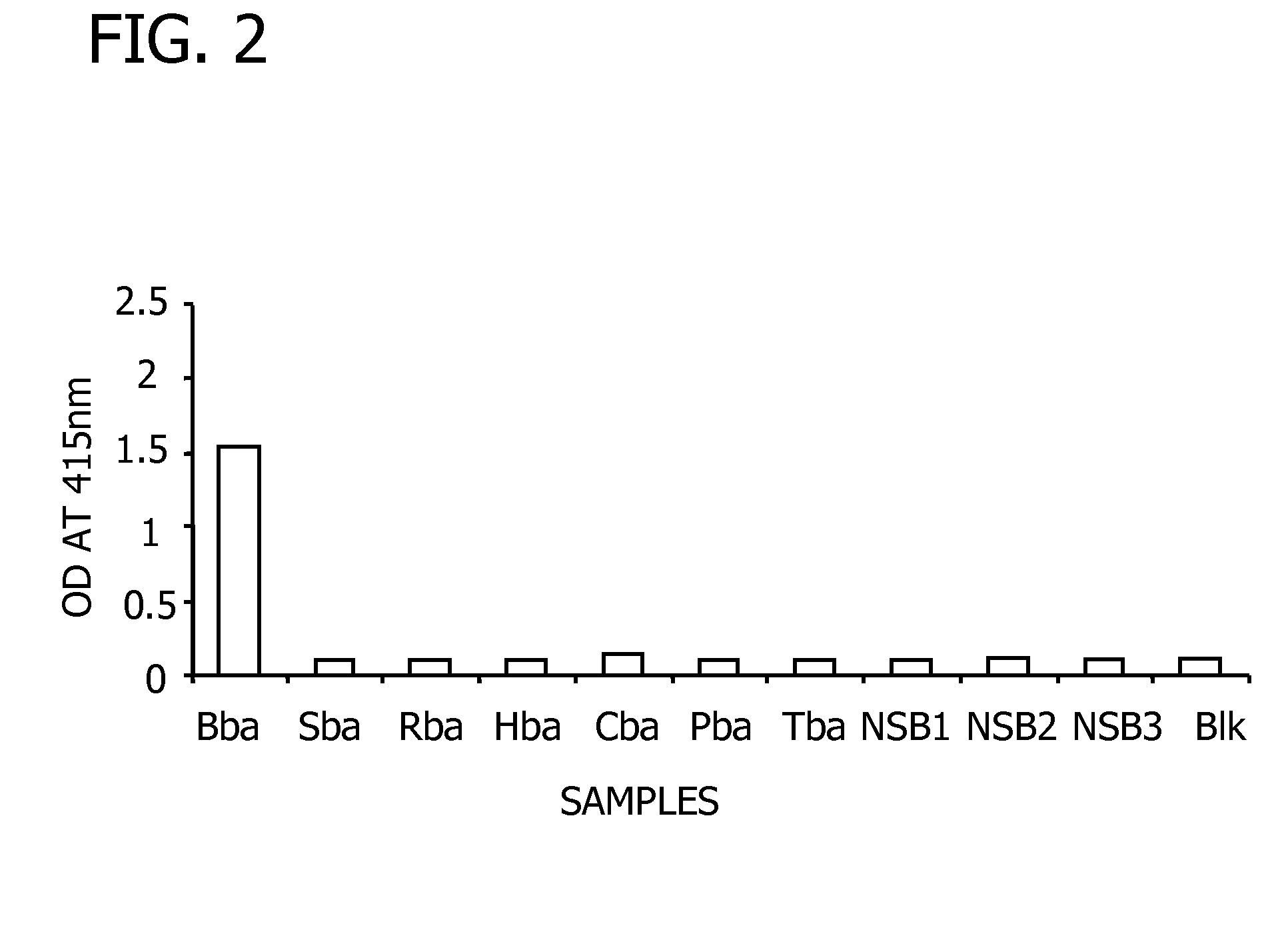Immunoglobulin Peptides Against Heated Bovine Blood
a technology of immunoglobulin and bovine blood, which is applied in the field of immunoglobulin peptides, can solve the problems of meat and bone meal from ruminant origin may still enter the cattle diet, the level of prohibited meat and bone meal residues is uncertain, and the future is uncertain
- Summary
- Abstract
- Description
- Claims
- Application Information
AI Technical Summary
Benefits of technology
Problems solved by technology
Method used
Image
Examples
example 1
Production of Monoclonal Antibodies Specific to Bovine Blood Thermal Stable Proteins
Extraction of Thermal-Stable Soluble Protiens (TSPs) from Whole Animal Blood
[0126]Soluble TSPs were extracted from cooked and autoclaved whole blood sample from each species (bovine, porcine, ovine, equine, rabbit, turkey and chicken). Twenty mL of each blood sample was dispensed into a 50-ml beaker to prepare the “autoclaved blood sample.” The beaker was covered with aluminum foil and autoclaved for 15 minutes at 121° C. at 1.2 bars. Another beaker containing 20 mL of blood sample from each species was heated in a boiling water bath for 15 minutes to obtain “cooked blood sample.” Both autoclaved and cooked blood samples from each species were then mashed into fine particles using a glass rod. An equal volume (20 mL) of the extraction buffer (10 mM phosphate buffered saline) was added to the mashed samples to extract the soluble TSPs and the mixture was homogenized for 2 minutes at 11000 RPM usin...
example 2
Development of a Sandwich Elisa for the Detection of Bovine Blood in Animal Feedstuff and in Ground Beef
Characterization of MAbs Specificity and Cross-Reactivity
[0135]Species and tissues specificity of MAbs were determined by testing each MAb supernatant with raw, cooked and autoclaved blood extracts from different animal species, meat extracts, and extracts from other proteins using indirect ELISA procedures as described in Example I.
Epitope Comparison
[0136]Epitope comparison was performed to search two comparable MAbs for construction of a sandwich ELISA. The ELISA method developed by Friguet and others (1983) was adapted for comparison of the relative binding sites of MAbs on the antigen. This test is based on an estimation of the limited number of antigenic sites simultaneously available to a pair of MAbs. The binding of the first MAb on the antigen inhibits the binding of the second MAb if both bind to the same or relatively close epitopes. However, if a pair of MAbs recogn...
PUM
| Property | Measurement | Unit |
|---|---|---|
| density | aaaaa | aaaaa |
| density | aaaaa | aaaaa |
| temperature | aaaaa | aaaaa |
Abstract
Description
Claims
Application Information
 Login to View More
Login to View More - R&D
- Intellectual Property
- Life Sciences
- Materials
- Tech Scout
- Unparalleled Data Quality
- Higher Quality Content
- 60% Fewer Hallucinations
Browse by: Latest US Patents, China's latest patents, Technical Efficacy Thesaurus, Application Domain, Technology Topic, Popular Technical Reports.
© 2025 PatSnap. All rights reserved.Legal|Privacy policy|Modern Slavery Act Transparency Statement|Sitemap|About US| Contact US: help@patsnap.com



